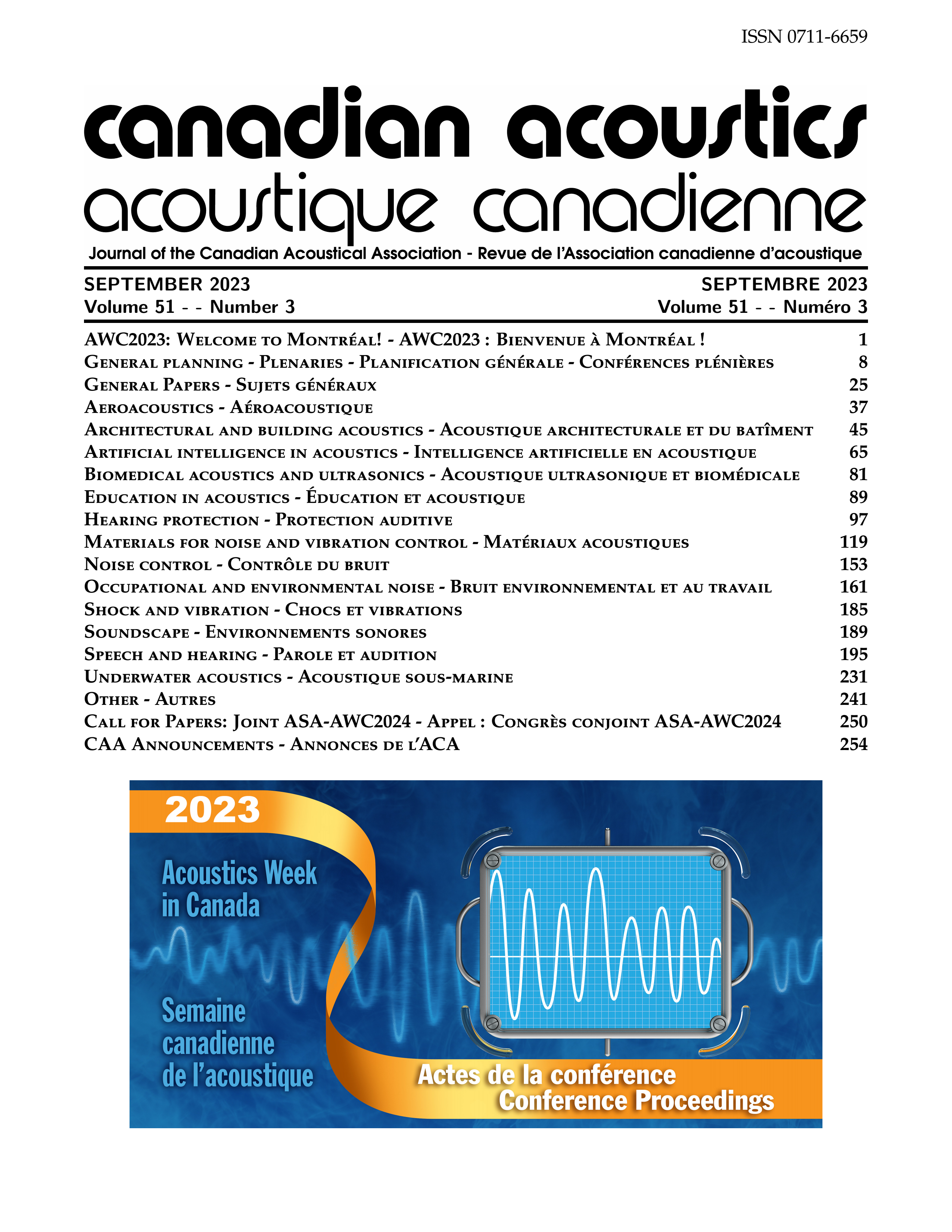Bridging the Gap Between Sound and Non-Sound Professionals with Virtual Reality
Abstract
Urban soundscape planning remains a challenge to many due in part to a scarcity of soundscape design tools. While many sound planning tools exist, they are generally geared towards acousticians rather than non-sound-based Professionals of the Built Environment (PBEs) (e.g., urban designers, planners, or landscape architects). This disconnect produces pressure points for both PBEs and acoustics experts, resulting in sound being considered late in urban projects and large burdens being placed on acousticians to consider many aspects outside their own areas of expertise. This work presents a new 3D virtual reality simulator to help PBEs consider sound in outdoor public spaces. City Ditty was created through a user-centered design process, focused on identifying and evaluating functionalities that would benefit PBEs that do not have much experience with sound. Through focusing on the auditory experience via a soundscape framework, this can help people learn to talk about sound in an accessible way and give them simple tools to consider different sound intervention strategies. This was done through a self-guided sound-awareness session that walks the user through 36 tasks in desktop virtual reality. These hands-on tasks both illustrate soundscape principles while serving as instructions on how to use the many functions of City Ditty. E.g., listen to the city soundscape at different times of the day, pedestrianize the city centre, modify permissible construction times, and add birdfeeders to attract sounds of nature. Early testing indicated that users could use this to 1) learn how to use the software itself, 2) learn basics of soundscape design, and 3) implement their own simple soundscapes in less than an hour. This presentation gives an overview of current barriers and possible timelines for adoption, followed by preliminary results of a new usability study that extends this work into head-mounted virtual reality with enhanced audio capabilities.Additional Files
Published
How to Cite
Issue
Section
License
Author Licensing Addendum
This Licensing Addendum ("Addendum") is entered into between the undersigned Author(s) and Canadian Acoustics journal published by the Canadian Acoustical Association (hereinafter referred to as the "Publisher"). The Author(s) and the Publisher agree as follows:
-
Retained Rights: The Author(s) retain(s) the following rights:
- The right to reproduce, distribute, and publicly display the Work on the Author's personal website or the website of the Author's institution.
- The right to use the Work in the Author's teaching activities and presentations.
- The right to include the Work in a compilation for the Author's personal use, not for sale.
-
Grant of License: The Author(s) grant(s) to the Publisher a worldwide exclusive license to publish, reproduce, distribute, and display the Work in Canadian Acoustics and any other formats and media deemed appropriate by the Publisher.
-
Attribution: The Publisher agrees to include proper attribution to the Author(s) in all publications and reproductions of the Work.
-
No Conflict: This Addendum is intended to be in harmony with, and not in conflict with, the terms and conditions of the original agreement entered into between the Author(s) and the Publisher.
-
Copyright Clause: Copyright on articles is held by the Author(s). The corresponding Author has the right to grant on behalf of all Authors and does grant on behalf of all Authors, a worldwide exclusive license to the Publisher and its licensees in perpetuity, in all forms, formats, and media (whether known now or created in the future), including but not limited to the rights to publish, reproduce, distribute, display, store, translate, create adaptations, reprints, include within collections, and create summaries, extracts, and/or abstracts of the Contribution.


